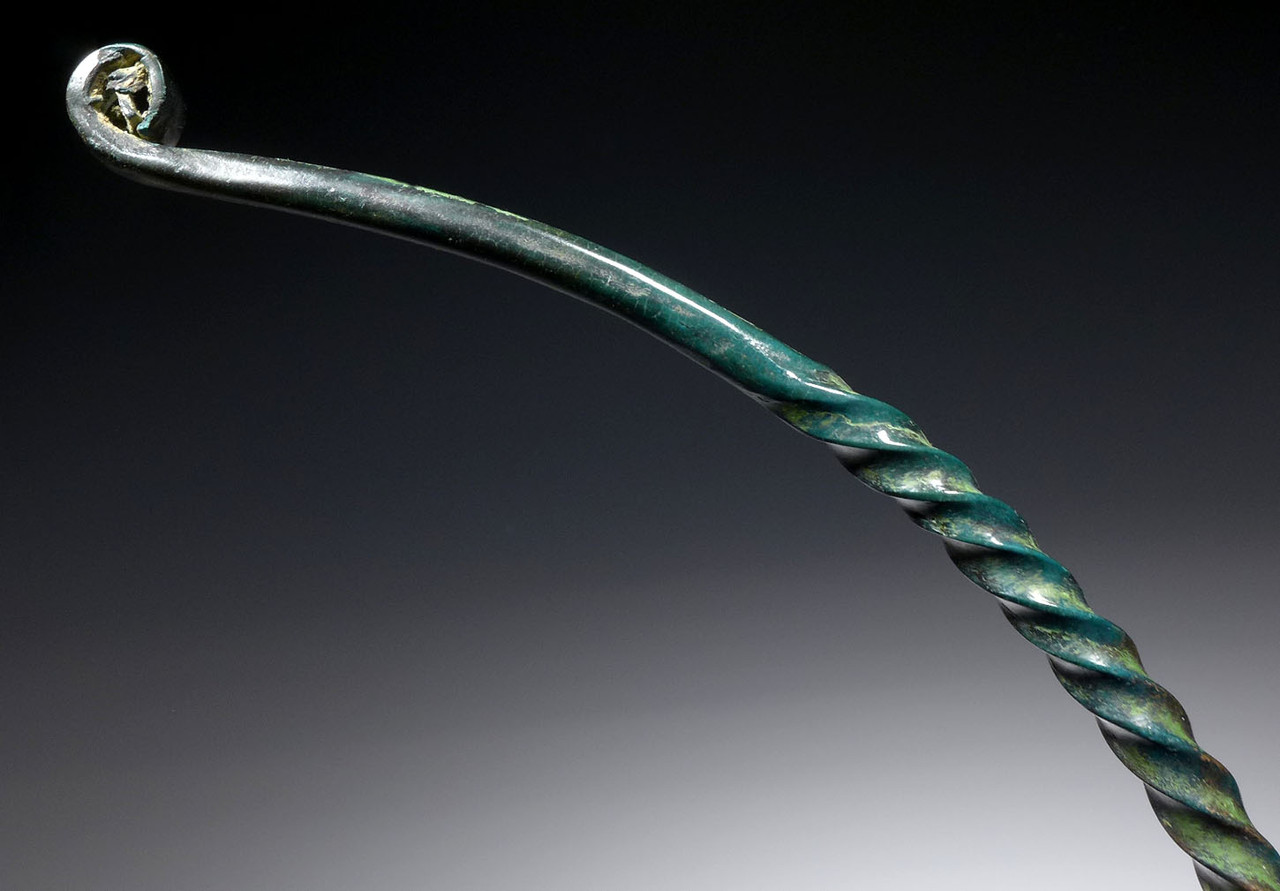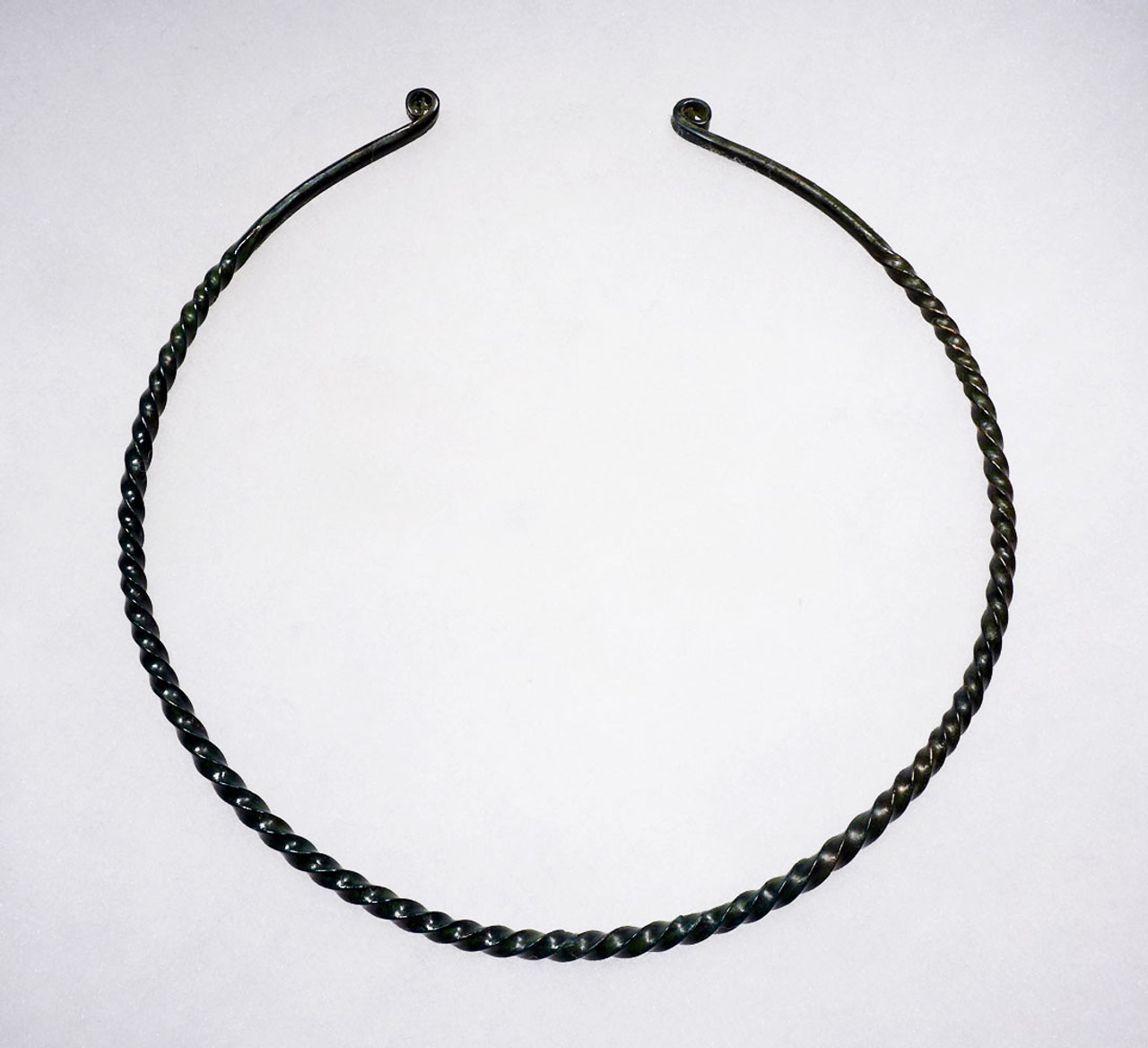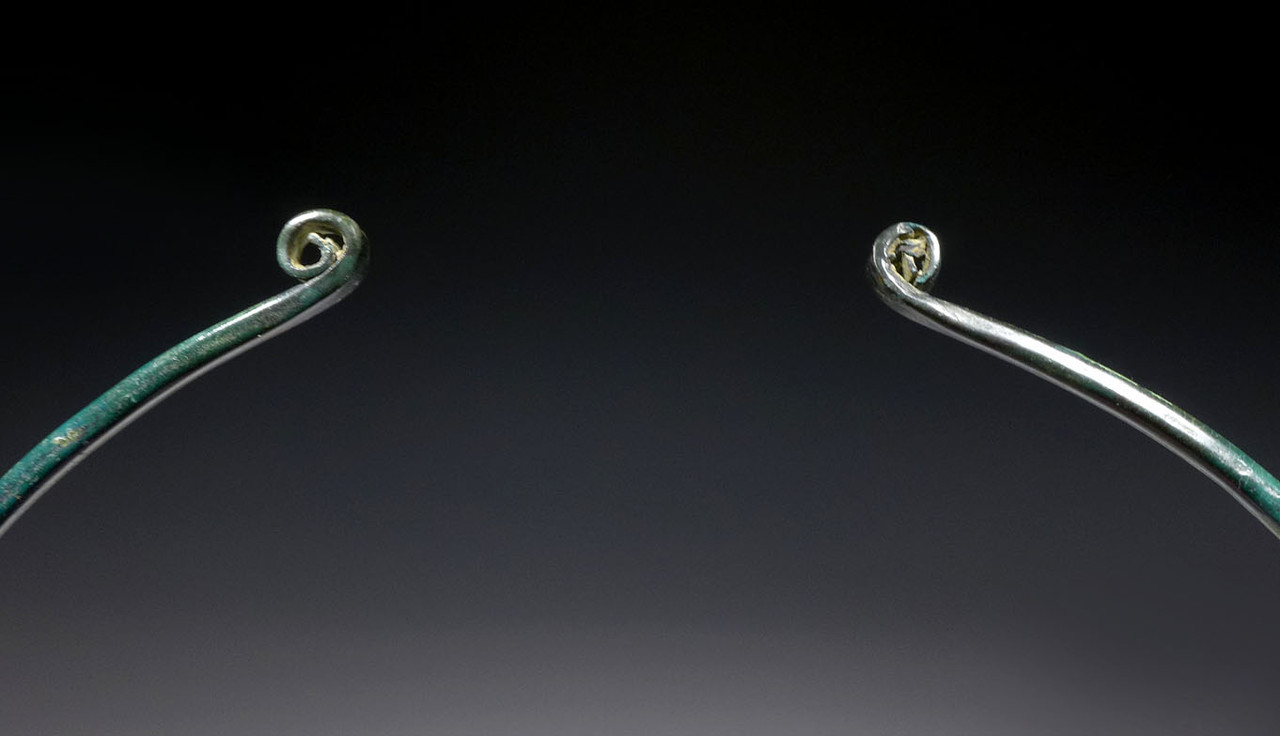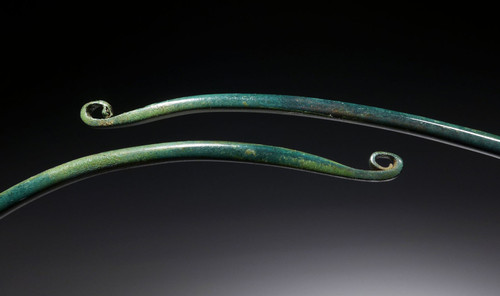Product Description
SEE MORE EUROPEAN BRONZE AGE ARTIFACTS
A classic object of personal adornment, status and wealth in ancient Europe, this is a rare unbroken decorative twisted bronze torque necklace collar ring from the Middle Bronze Age of Central Europe. This museum-class bronze ancient jewelry displays the highest level of metal-smithing skill in ancient time. What looks rather simple required an extraordinary amount of work to complete. The entire torc is hand-forged and has been skillfully twisted to give it the wonderful spiral form. The terminals are each turned into a spiral form on their ends. Since this torc was hand-wrought, the work-hardening would have given the ring strength and spring tension, allowing it to have been twisted to put on and take off (not safe to do now due to its age).
European Bronze Age jewelry pieces like this are not common with torque neck rings and larger pieces being far more rare than simple finger rings since the necklace required more bronze to make and greater work to hand-fabricate versus simple casting. Large twisted torque neck rings of this design are scarce but when found, most often are broken due to their fragile nature. Here we have an UNBROKEN and complete example displaying the FINEST bronze patina. The gloss is natural and a result of the bronze being originally high-polished in ancient times and later forming a stunning mint and emerald green patina over its surface. Of all the ancient bronze objects in the world, these Europena Bronze Age objects display the most spectacular patina when everything is perfect as in this case!
Cleaned and treated in our lab to protect and preserve the integrity of the metal and allow safe handling. Be wary of modern copies that plague the antiquity market today. We subject every artifact we offer for sale to rigorous inspection and authentication in our own museum lab facility.
HISTORY
The Tumulus culture dominated Central Europe during the Middle Bronze Age (c. 1600 to 1200 BC). It was the descendant of the Unetice culture. Its heartland was the area previously occupied by the Unetice culture besides Bavaria and Württemberg. It was succeeded by the Late Bronze Age Urnfield culture. The Tumulus culture was eminently a warrior society, which expanded with new chiefdoms eastward into the Carpathian Basin (up to the river Tisza), and northward into Polish and Central European Únětice territories. The culture's dispersed settlements centred in fortified structures.
As the name implies, the Tumulus culture is distinguished by the practice of burying the dead beneath burial mounds (tumuli or kurgans). The Tumulus culture was prevalent during the Middle Bronze Age. Tumuli have been used elsewhere in Europe from the Stone Age to the Iron Age yet, the term "Tumulus culture" specifically refers to the South German variant of the Bronze Age.
 US DOLLAR
US DOLLAR
 EURO
EURO
 AUSTRALIAN DOLLAR
AUSTRALIAN DOLLAR
 CANADIAN DOLLAR
CANADIAN DOLLAR
 POUND STERLING
POUND STERLING


















